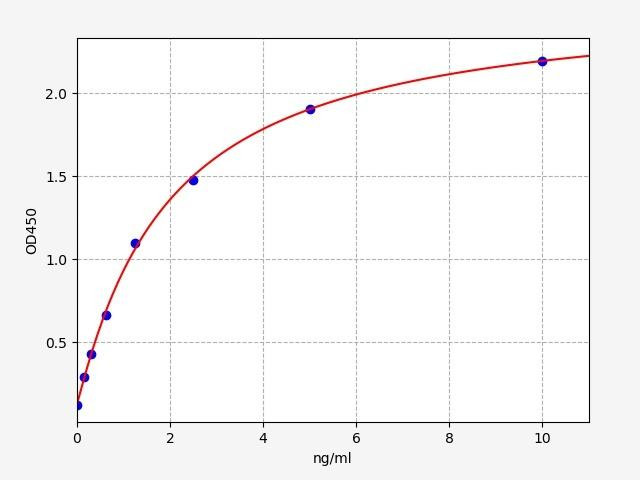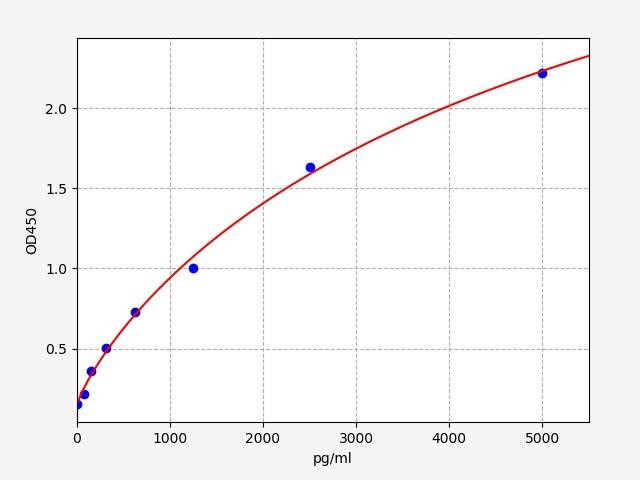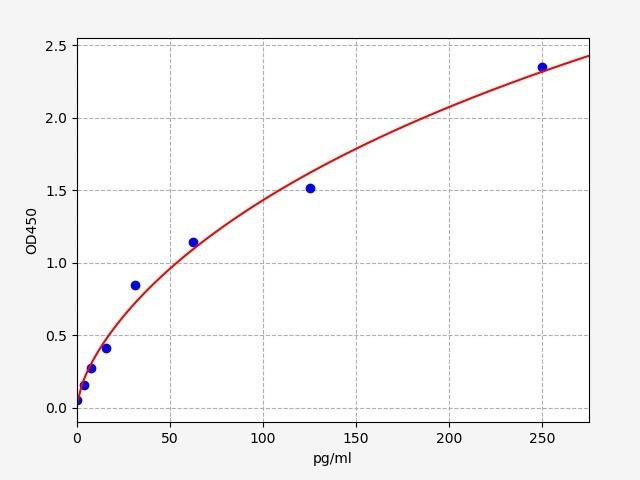Innate Immunity : The Body's First Line of Defence
Welcome to an exploration of the evolutionary trajectory and significance of the innate immune system - the body's first line of defense against invading pathogens. In this scientific journey, we will delve into the essential components that constitute the innate immunity's robust defense mechanism
Additionally, we will shed light on the implications of immune-related disorders, revealing the delicate balance that dictates the immune system's effectiveness.
Key Takeaways
- The innate immune system is the body's first line of defense, providing rapid and non-specific protection against pathogens.
- Components include physical barriers, immune cells (macrophages, NK cells), proteins (TLRs, complement system), and more.
- Dysregulation or deficiencies in innate immunity can lead to various disorders, impacting the body's ability to fight infections.
- Understanding innate immunity's evolution and intricacies informs research and interventions in immunology.
Table of Contents
Jump to a section:
The Innate Immune System - Evolution and Significance
One of the fundamental components of out immunity is is the innate immune system, which acts as the body's first line of defense against invading pathogens. Unlike the adaptive immune system, which develops over time and provides specific, targeted responses, innate immunity is a rapid and non-specific defense mechanism that is evolutionarily ancient.
The innate immune system has been evolutionarily conserved across organisms, originating in simple life forms with basic defense mechanisms against pathogens. In unicellular organisms, antimicrobial substances were produced. With the emergence of multicellular organisms, specialized phagocytic cells like macrophages and neutrophils evolved for engulfing pathogens. As evolution continued, receptor proteins such as Toll-like receptors (TLRs) evolved to detect pathogen-specific patterns. The innate immune system's ability to cooperate with the adaptive immune system through antigen presentation shaped a highly effective immune defense network, demonstrating its fundamental significance in safeguarding organisms from infections.
The innate immune system serves as the body's rapid and non-specific defense mechanism against invading pathogens. Its immediate response to potential threats provides a crucial first line of defense, acting within minutes to hours after encountering pathogens. Unlike the adaptive immune system, the innate immunity possesses broad specificity, enabling it to recognize a wide range of conserved molecular patterns present in various pathogens without prior exposure. Additionally, the innate immune system includes physical barriers such as the skin and mucous membranes, preventing pathogens from entering the body. It also plays a vital role in initiating and shaping the adaptive immune response by presenting antigens to specialized immune cells. The innate immune system's significance lies in its ability to offer swift, early protection against infections and support the overall immune defense network in safeguarding the body's health.
Examples of Innate immunity
Innate immunity consists of our body's natural defense methods that protect us from infections every day. When we cough or sneeze, it helps expel harmful germs from our airways. Mucus acts as a sticky trap, catching and blocking invaders in our nose and throat. Tears contain special enzymes that can kill bacteria, helping to keep our eyes safe. Special cells in our blood, like "clean-up crews," gobble up and destroy invading germs. Think of them as tiny soldiers patrolling to keep us healthy. These natural defenses work together to shield us from harmful pathogens and keep us well.
Fig 1. The General Principles of Innate Immunity
Components of the Innate Immune System
The innate immune system comprises crucial components, including physical barriers, inflammation, the complement system, immune cells, and various proteins. These components work together to form a rapid and non-specific defense network, safeguarding the body against a wide range of potential threats.
Physical Barriers of Innate Immunity
As the first line of defense, physical barriers in the innate immune system act as vital fortresses, shielding the body from potential invaders. These barriers form an essential front that prevents pathogens from entering the body's internal environment.
Fig 2. Physical Barriers that are part of the Innate Imm
Skin Barrier
The skin, our body's largest organ, serves as a robust and impermeable barrier. Its outermost layer, the epidermis, forms a tough shield that prevents microbes from penetrating deeper tissues. The skin's slightly acidic pH and the presence of sebaceous glands producing antimicrobial substances create an unfavorable environment for pathogens. Moreover, the shedding of skin cells helps remove adhered pathogens, further contributing to its protective role.
Mucosal Membrane
Mucosal surfaces, lining various entry points like the respiratory, gastrointestinal, and genitourinary tracts, represent another essential physical barrier. These moist and sticky membranes secrete mucus, which acts as a trap, entrapping and immobilizing pathogens before they can reach vulnerable tissues. The mucus also contains antimicrobial components that neutralize some pathogens, further bolstering its protective effect.
Tears
Saliva
Saliva is not just essential for the initial breakdown of food; it also plays a defensive role. It contains antimicrobial agents like lysozymes and antibodies, which can help neutralize harmful microbes before they reach the digestive tract.
Blood-Brain Barrier
The blood-brain barrier is a unique structure that safeguards the brain and central nervous system. It is formed by tightly packed cells in the blood vessels, preventing most pathogens and harmful substances from entering the brain tissue. This barrier maintains a stable and protected environment for the brain's delicate functions.
Cells Involved in Innate Immunity
The innate immune system relies on a diverse array of specialized cells, each playing a crucial role in detecting and neutralizing invading pathogens. These cells act as the body's first line of defense, promptly responding to potential threats and initiating protective responses. Let's explore some of the key cellular components of innate immunity
Monocytes and Macrophages
Monocytes are circulating white blood cells that can quickly migrate to infected tissues, where they transform into macrophages. Macrophages are versatile "clean-up crews" that engulf and digest pathogens through phagocytosis. They are found in various tissues and organs, acting as sentinels that recognize and destroy invading microbes. Macrophages also play a significant role in shaping the adaptive immune response by presenting antigens to T cells, acting as a bridge between innate and adaptive immunity.
Mast Cells
Mast cells are abundant in tissues, particularly near blood vessels and mucosal surfaces. When activated by immune signals or physical injury, mast cells release histamine and other inflammatory mediators. Histamine causes blood vessels to dilate and become more permeable, contributing to inflammation and attracting other immune cells to the site of infection. Mast cells also play a role in allergies and hypersensitivity reactions.
Neutrophils
Neutrophils are the most abundant type of white blood cells and are essential for rapid responses to infections. Like macrophages, they are phagocytic cells that swiftly migrate to the site of infection and engulf and destroy invading pathogens. Neutrophils are particularly effective against bacterial infections and play a critical role in the early immune response.
Dendritic Cells
Dendritic cells are like "intelligence agents" of the immune system. They are found in tissues that are in contact with the external environment, such as the skin, respiratory tract, and gastrointestinal tract. Dendritic cells capture antigens from pathogens and then migrate to nearby lymph nodes, where they present the antigens to T cells. This antigen presentation is crucial for initiating an adaptive immune response and shaping the body's ability to target specific pathogens.
Natural Killer Cells
Natural Killer cells are potent cytotoxic lymphocytes that play a critical role in early defense against viral infections and tumor cells. Unlike other immune cells, NK cells do not require prior exposure to pathogens to recognize and eliminate infected or abnormal cells. They can identify cells with altered surface proteins and induce their death, acting as a rapid response to contain viral infections and limit tumor growth.
Basophils
Basophils are a type of granulocyte that plays a significant role in the innate immune response. They are primarily involved in allergic reactions and responses to parasitic infections. When activated, basophils release a variety of substances, including histamine, heparin, and cytokines. Although basophils make up only a small fraction of the total white blood cells, their role in promoting inflammation and allergic responses is vital for the body's immune defense.
Eosinophils
Eosinophils are another type of granulocyte involved in the innate immune system. They are particularly important in defending against parasitic infections and modulating allergic responses. Eosinophils contain toxic proteins, including major basic protein and eosinophil peroxidase, which are highly effective in destroying parasites. These cells are drawn to sites of inflammation by chemokines released during immune responses. Once at the site, eosinophils release their toxic proteins to directly attack and kill invading parasites. Additionally, eosinophils play a role in allergic reactions by releasing substances that counteract the effects of histamine, thus helping to regulate and dampen allergic responses.
Innate Immunity and Inflammation
Innate immunity and inflammation are interconnected processes that form the body's initial defense against infections and injuries. When harmful pathogens or tissue damage is detected, immune cells release pro-inflammatory molecules, attracting other immune cells to the affected site. This triggers vasodilation, increased permeability of blood vessels, and the recruitment of immune cells, such as neutrophils and monocytes. These immune cells work together to eliminate pathogens and initiate tissue repair. Once the threat is neutralized, anti-inflammatory molecules are released to regulate and resolve the inflammatory response. While inflammation is a necessary and beneficial process, excessive or prolonged inflammation can lead to various health issues.
The Complement System
The complement system is a vital component of the innate immune response, comprising a group of proteins that act in a cascade of reactions to enhance the body's defense against pathogens. Activation of the complement system can occur through three main pathways: the classical pathway, the alternative pathway, and the lectin pathway. Once activated, the complement system plays several key roles in immune defense. It marks pathogens for destruction through opsonization, where complement proteins coat pathogens, facilitating their recognition and elimination by immune cells. The complement system also forms membrane attack complexes (MACs) that directly lyse certain pathogens. Furthermore, it releases inflammatory mediators that attract immune cells and promote inflammation, contributing to the rapid and efficient elimination of pathogens. Tight regulation of the complement system is crucial to prevent excessive responses and protect host cells. Complement control proteins carefully modulate complement activation to maintain a balanced immune response.
Key Proteins involved in Innate Immunity
Apart from the proteins of the complement sytem, Innate immunity relies on a variety of specialized proteins that play pivotal roles in detecting and neutralizing pathogens. These key proteins form an essential part of the innate immune system, working in concert to provide rapid and non-specific defense against infections. Let's explore some of the crucial proteins involved in innate immunity and their vital functions in safeguarding the body's health.
Toll Like Receptors
Toll-like receptors are a class of pattern recognition receptors that recognize specific structures commonly found on pathogens, known as pathogen-associated molecular patterns (PAMPs). TLRs are present on immune cells, such as macrophages and dendritic cells. Upon detecting PAMPs, TLRs trigger signaling pathways that lead to the production of pro-inflammatory cytokines and type I interferons, essential for initiating immune responses against invading pathogens.
Interferons
Interferons are a group of signaling proteins produced in response to viral infections and other microbial threats. They play a crucial role in activating antiviral defenses and enhancing the immune response. Interferons help neighboring cells resist viral replication, limit the spread of infections, and activate immune cells to eliminate infected cells.
Defensins
Defensins are antimicrobial peptides produced by various cells, including epithelial cells and immune cells. They act as a first line of defense, directly attacking and destroying pathogens by disrupting their cell membranes. Defensins have broad-spectrum activity against bacteria, viruses, and fungi.
C-reactive Protein (CRP)
C-reactive protein is an acute-phase protein produced by the liver in response to inflammation. CRP binds to phosphocholine expressed on bacterial cell walls and damaged host cells, marking them for destruction by complement activation. Elevated CRP levels in the blood are indicative of inflammation and infection.
Kits related to Innate Immunity
Related Kits

| Human Mannose Binding Lectin ELISA | |
|---|---|
| ELISA Type: | Sandwich |
| Sensitivity: | 0.094ng/ml |
| Range: | 0.156-10ng/ml |

| Human NCAM-1 / CD56 ELISA | |
|---|---|
| ELISA Type: | Sandwich |
| Sensitivity: | 46.875pg/ml |
| Range: | 78.125-5000pg/ml |
Disorders of the Innate Immune System:
While the innate immune system is designed to protect the body from infections and maintain overall health, abnormalities or dysregulation can lead to various disorders. These disorders can arise from genetic mutations, immune deficiencies, or excessive immune responses.
TLR Deficiencies
Deficiencies in TLRs, including MyD88 deficiency, result in impaired recognition of pathogens, leading to a weakened immune response. Individuals with TLR deficiencies are more susceptible to severe and recurrent infections, particularly viral and bacterial infections. MyD88 deficiency, in particular, disrupts TLR signaling pathways, affecting multiple TLR responses. These disorders underscore the crucial role of TLRs and MyD88 in early pathogen recognition and the initiation of immune responses.
NK Cell Deficiencies
NK cell deficiencies can result from genetic defects affecting NK cell development or function. Individuals with NK cell deficiencies are more susceptible to viral infections and have an increased risk of certain malignancies. The absence or impairment of NK cell activity compromises the early response to infected or abnormal cells, reducing the body's ability to control infections and tumor growth.
IFN Gamma/IL-2 Deficiencies:
Interferon-gamma (IFN-γ) and Interleukin-2 (IL-2) are essential cytokines involved in regulating immune responses. Deficiencies in IFN-γ or IL-2 production or receptor function lead to an increased susceptibility to severe infections, particularly mycobacterial infections. Additionally, these deficiencies impair the development and function of other immune cells, impacting the overall immune response and increasing the risk of opportunistic infections.
IFN Gamma/IL-2 Deficiencies:
Interferon-gamma (IFN-γ) and Interleukin-2 (IL-2) are essential cytokines involved in regulating immune responses. Deficiencies in IFN-γ or IL-2 production or receptor function lead to an increased susceptibility to severe infections, particularly mycobacterial infections. Additionally, these deficiencies impair the development and function of other immune cells, impacting the overall immune response and increasing the risk of opportunistic infections.
Complement System Disorders
Complement system disorders encompass a range of conditions resulting from deficiencies in specific complement proteins or regulatory proteins. Defects in the complement system can lead to an increased susceptibility to infections, particularly with encapsulated bacteria, and contribute to autoimmune conditions, such as systemic lupus erythematosus (SLE) and complement-mediated kidney diseases. Dysregulation of the complement system can disrupt the balance between immune responses and inflammation, leading to various immune-related disorders.
Macrophage Activation Syndrome (MAS)
MAS is a severe and life-threatening complication of certain rheumatic and autoinflammatory diseases, primarily affecting pediatric patients. It involves excessive activation and proliferation of immune cells, particularly macrophages and T cells. This uncontrolled immune response leads to systemic inflammation, high fever, and organ damage. MAS requires prompt and aggressive treatment to control the immune response and prevent serious complications. Early recognition and intervention are crucial to improving outcomes for individuals with MAS.
Conclusion
The evolution of the immune system from its ancient origins to the complex defense mechanism it is today showcases the innate immune system's significance in providing immediate protection against pathogens. Its components, including physical barriers, inflammation, complement proteins, immune cells, and key proteins like Toll-like receptors (TLRs) and natural killer (NK) cells, contribute to its robust defense. However, this journey also reveals a spectrum of disorders, underscoring the consequences of dysregulation or deficiencies in innate immunity. Understanding these intricacies offers opportunities for targeted interventions, improved diagnostics, and a deeper appreciation of the human body's resilience. As we look to the future, our exploration of the innate immune system inspires progress in immunology
Written by Rithika Suresh
Rithika Suresh completed her undergraduate degree in Biotechnology in Anna University before completing her masters in Biotechnology at University College Dublin.
Recent Posts
-
Enavatuzumab: Revolutionizing Cancer Research Through Novel Therapeutics
Quick Facts About EnavatuzumabWhat is Enavatuzumab?Enavatuzumab is a monoclonal antibo …17th Dec 2025 -
Alemtuzumab: Mechanism, Applications, and Biosimilar Advancements
Quick Facts About AlemtuzumabWhat is Alemtuzumab?Alemtuzumab is a monoclonal antibody …17th Dec 2025 -
Validation of MycoGenie Rapid Mycoplasma Detection Kit - A highly sensitive visual determination method for Mycoplasma detection.
The MycoGenie Rapid Mycoplasma Detection Kit enables the detection of 28 Mycoplasma sp …3rd Mar 2025






